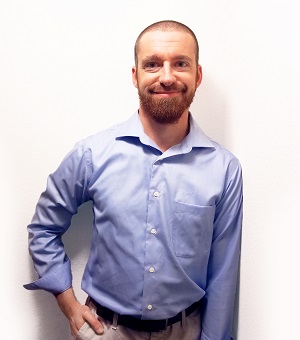Picture yourself 20 years ago. The year was 1998… Google was founded, mobile phones were huge (with respect to today’s smart phones), and Microsoft became the biggest company in the world. Immense year for change in the legal profession, no doubt. But there was also something else that took America by storm, something that can also benefit legal teams even today – improv acting!
That’s right, 1998 was the year Drew Carey hosted the show, “Whose Line Is It Anyway?” on ABC. For those who are not familiar, this highly popular (and hilarious!) show consisted of four improvisational comedians who performed short-form improvisation games through topics either from audience suggestions or predetermined prompts from Carey. It was a Wednesday night staple in my household growing up, and my first exposure to improv comedy.
Throughout the years watching this show, I noticed there was a general rule-of-thumb: an idea between two or more improv comedians was almost never shot down. It seemed that no matter how silly or ludicrous the situation proposed from the first comedian – no matter the who, what, or where – the second comedian rolled with it, sometimes adding an even sillier or more absurd narrative than before. It was only years later when I took a series of adult improv workshop classes through ComedySportz® (another version of short-form improv comedy skits performed on-the-spot) that I learned that this constant theme had a name: “Yes, And…”
Often called “The First Rule of Improv,” “Yes, And…” is a powerful idea that is beneficial not only in improv comedy, but in your legal team environment as well. Because, if you think about it, the legal profession you work in is like that of an improv comedy scene: you’re in a team environment (two or more people), with the end goal being to try and help each other succeed via open communication. The more positive and effective each team member is, the more positive and effective you will be as a collective. So, to accomplish all this, you must become accepting. And acceptance is laid out firmly and clearly through “Yes, And…”
Here’s how it works:
Whenever a situation is brought to your attention, you should accept that situation (the “yes” part), and then contribute by adding new information into the narrative (the “and”).
That’s basically it. Sounds easy, right? In theory, yes. In reality… not so much. In my very first ComedySportz workshop class, all of the participants took turns for 30 minutes being the initiator and recipient of various “Yes, And…” examples, and we were simply terrible. Most of the time, the recipient was skeptical and countered with a question, avoiding ownership, accountability, or responsibility for the narrative (not uncommon to avoid being embarrassed). This is defined as “Yes, But…,” and as you can imagine, it kills scenes on the spot. It took weeks to practice, improve, and polish this core tenet of improv comedy, but by the 8th and final week of the workshop we were moderately comfortable with flexing our “Yes, And…” muscles to accept a narrative, and then expand on it.
Don’t get me wrong: it’s important to question and apply logic and reason when skeptical. Attorneys, paralegals, and office managers on a legal team are masters at exposing all sorts of unknowns through this line of reasoning. But you can be judgmental later on in the decision-making process; every time you encounter a narrative by using “Yes, But…” in the brainstorming phase, you shoot down the suggestion and end the line of communication, and this can damage your relationship with your team member(s) if done constantly. “Yes, And…,” on the other hand, is a tremendous philosophy to add if you want to succeed and thrive in the legal profession. For starters, it’s genuine and optimistic. Yes! When it’s show time, you must receive what is presented as your starting point. When adding it as one of your habits, you become more open and tolerable of other people’s ideas, no matter how crazy they may sound. And you will also improve listening to other ideas and beliefs rather than hearing them, since listening is a more active extension than hearing. By saying yes, you are receptive of the reality that is created in front of you, which starts the cooperative of turning “nothing” into “something” because there is a crystal-clear foundation of trust and communal respect.
I want to highlight this again… it is that important: the “And…” part creates opportunities and expectations to change something… anything and everything! Just because you’ve accepted the starting point doesn’t mean you must end there. Within an accepted situation, you can begin to mold, smoothen, and tack on various ideas to fit your own agenda. Once I understood this latter part of “Yes, And…,” I felt unstoppable. If you don’t like something in your legal team environment, you have the power to change it. Or if you try and can’t change it, you have the power to change the way you think about it. You truly are the master of your fate and the captain of your soul, you really are!
Here’s an example of how “Yes, And…” can be applied in the legal profession:
Person #1: The client wants alternative fee arrangements, but each matter is so complicated that we don’t have comparable ones to use as fee benchmarks! Oh, no!
Person#2: Yes, and let’s sit down and figure out how to break down these matters into sub-parts, then build a fee arrangement around each sub-part.
While this example is not particularly funny compared to a 90’s skit performed by Ryan Stiles and Colin Mochrie, it does prove the power and influence of “Yes, And…”: it’s realistic, optimistic, and moves your present reality forward to a more favorable future outcome. And in the end, what legal team member would say “Yes, But…” to that?








